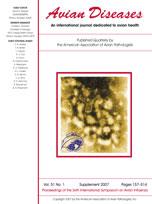Anseriformes are the reservoir of low-pathogenicity avian influenza viruses (LPAIV). Studies have shown a high LPAIV prevalence associated with low antibody detection in a wild duck population in northern European countries, whereas in winter areas (Mediterranean basin), low viral detection and high seroprevalence were observed.
In order to gain insight into the role played by both population recruitment and migration on AIV persistence, an epidemiological model was developed. A susceptible, infectious and removed (immune or dead)–individuals model coupling population and infection dynamics was developed to simulate LPAIV circulation in dabbling ducks throughout the entire year. The transmission coefficient (β) was calculated using the original dataset of published works, whereas dabbling duck demographic parameters were obtained from the literature. The estimated host density threshold for virus persistence is 380 susceptible individuals per day whereas the critical community size needed for maintaining the virus throughout the winter has been estimated to be about 1200 individuals. The model showed peaks of viral prevalence after nesting and during the moult period because of population recruitment and high host density, respectively. During the winter and spring periods, the viruses reach the minimal endemic level and local extinction is highly probable because of stochastic phenomena, respectively 80% and 90% of probabilities. The most sensitive parameters of the model are the recruitment rate of young susceptible animals and the duration of virus shedding.





